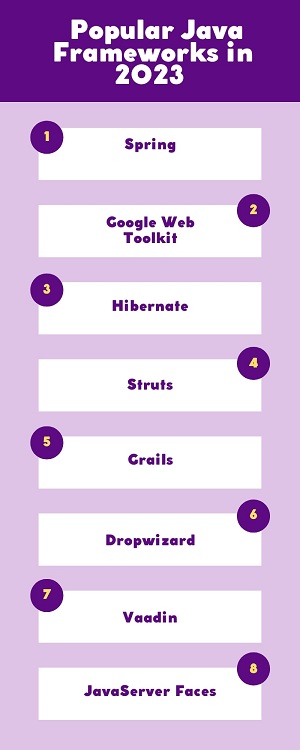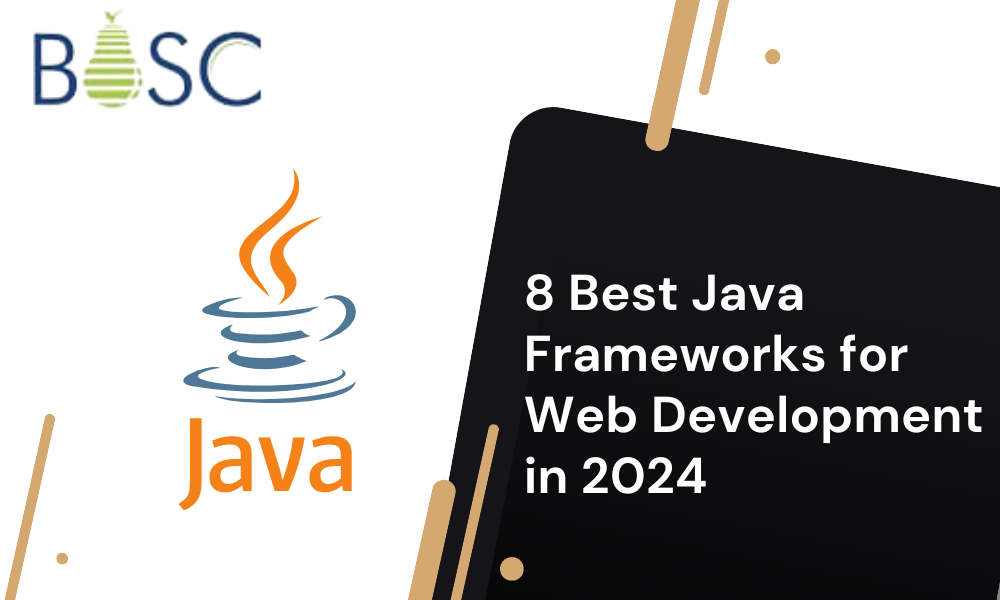Frameworks are the body or platform of the pre-written code which Java developers have used to create web applications. On the other way, we can say that the Java framework is the predefined class and the function set to control hardware devices, process input, and communicate with system applications.
A well-known Java framework will behave like a skeleton and aid the developer in making an app by writing their code and wondering how necessary a Java framework is.
As an enterprise, have you been looking forward to adding the Java framework with the tools? If yes, this blog post will help you with helpful and valuable insights.
It is an amazing idea to get information and an understanding of Java frameworks. However, Java is considered one of web developers’ most popular coding languages. To get the benefit, let’s see the best Java frameworks in 2023 that one can use in their development and stay ahead of the competition.
App Market in the USA in 2022
- The total revenue in the app market is about to reach US$108.1bn in 2022.
- It will show an annual growth rate (CAGR 2022-2027) of 6.76%, which results in the projected market volume of US$158.10bn by 2027.
- An in-app purchase revenue in the app market is estimated to reach US$55.90bn in 2022.
- Paid app revenue in the app market is around to reach US$0.75bn in 2022.
- The app market of advertising revenue will reach US$51.43bn in 2022.
- The number of apps downloaded in the app market is approximately 14,537.7m downloads in 2022.
- An average per revenue with the download is expected to be US$7.43.
Define Java Framework
Before moving into the Java framework, we know that Java is backend technology. What are backend technologies, you must be wondering, right? A website’s server side is called the backend. It maintains and organizes data and ensures its website’s client-side functions correctly.
Java framework is a predefined code that programmers utilize to make the application on the web. Hence, these frameworks are classes and functions that control hardware, input process, and communicate with system apps.
The significant difference between these frameworks and the common framework is that the former consists of pre-written codes and libraries that will help the engineers to build an application without writing unique code individually.
However, all these frameworks assist the developers in creating the software by giving guidelines, standards, and rules to provide efficiency in the development procedures. Hence, Java frameworks are also referred to as libraries and APIs.
Advantages of Java frameworks for web application development

1. Simplifies code
Developers make use of a framework for the simplification of code in Java development. They ensure that the generated codes are marked down to a considerable extent with the help of preset codes and libraries embedded with them. It means you do not need to write all codes individually using Java frameworks.
Hence, the best Java web frameworks have several pre-written codes built per the creator’s standardized procedures and standards. As a result, developers will deduct the time and effort incurred in building the different apps, resulting in a quick quantifiable ROI.
2. Multiple Options for Development
Besides simplifying code, the Java framework gives multiple options and features to developers. It gives the platform that allows users to make responsive apps efficiently since it has created the standard and rules developers follow during a development procedure. Thus, it results in simple web app development, which is adaptive and efficient. If you want to know about web application development in detail, then you can read our article. click here!
3. Provides Security and Reliability
Java apps are created with different intricate methods and algorithms that are secure, reliable, and adaptive. The framework will always do 100% of its objective without damaging or disrupting your web apps.
Although Java frameworks are popular and have a massive user base, programmers are proficient in using these frameworks and adapt as per the needs of the developers. Hence, it ensures that there is no security breach or malware attack on the web app at any cost.
Why use Java Frameworks?
Apps are given the structure with the help of these frameworks. Developing a framework for testing, online apps, and object-relational mapping is the best way for experts to automate distinct tasks and produce a reliable outcome. Java framework has the Java frontend and backend frameworks that will make the developer’s lives easier and help them to focus on the business logic rather than the generic code used throughout a domain or application.
Top 10 Popular Java Frameworks in 2023
Frameworks are the tools that are the pre-written code and will serve as the template or skeleton and are reused to make the apps by simplifying filling the code as required. Thus, it will save the developer time and effort to write every line of code from scratch to develop each app. Let’s see below some of the Java frameworks.

1. Spring
It is an open-source and lightweight java web framework. It gives the infrastructure support to build Java apps. As it is the most popular Java Enterprise Edition (JEE), spring helps developers to create high-performing apps using plain old Java objects.
How does spring function?
It is an app operated on Java Platform, Enterprise Edition, and aids you in multi-programming.
Spring framework will make the usage of Inversion of Control (IoC) and Dependency Injection (DI). However, IoC helps to develop highly testable apps. It gives the facility of providing the auto-wiring of all dependencies and loose coupling. On the other hand, DI delivers access to external dependencies and also gives a way to configure them. Hence, it gives flexibility during run time.
A modularity of spring permits a developer to benefit from the tools for every step of the project. Spring will interact seamlessly with the infinite security tools and features, and this framework enables the programmers to build and implement features such as login validation and user authentication. Thus, this gives the optimal security of the application and the user’s data.
2. Google Web Toolkit (GWT)
In this framework, the open-source community ensures that many applications are developed using GWT. It is incredibly lightweight and makes it easy to implement. Like the spring, it also gives flexibility and scalability, making the development process efficient and quick.
GWT is the API to develop dynamic web pages or apps with JavaScript and HTML. Compared with other frameworks, GWT delivers a more compact library solution besides going through the multiple layers of libraries. Hence, it gives one library that works on multiple platforms like iOS and Android.
How will Google Web Toolkit function?
The Java framework gives critical tools for web application development. It also grants engineers the ability to build desktop and mobile applications for enterprises using JavaScript, CSS, and HTML. All the code written in this framework is encapsulated into a single file. Hence, it can be executed virtually without a compilation as a Java application, reducing implementation time and all errors.
The benefit of the GWT over the other framework is that it makes development rapid because it exits with functionalities like hotspot routing, extensibility, and expression language. Therefore, this framework also allows using Google Scripting Language (JavaScript) rather than the other language, like C++.
3. Hibernate
Hibernate framework gives some abstraction, which means that programmers don’t have to worry about integration since hibernate does the integration for you internally. For example, writing the query with CRUD and establishing the new connection is at the top of the Java framework list.
It is also used to develop the persistence logic in the Java framework. It means that you can save and process the data for prolonged use. To understand it better, you must know that hibernate is an open-source, lightweight, and non-invasive framework. Hence, it is used to build the objects independently on software databases and create independent persistence logic in all Java applications.
How is Hibernate operated in the backend?
Any Java app can use Hibernate, the open-source object-relational persistence and query service, as it is one of the well-known Java frameworks. It frees the coders from the routine data persistence-related programming, which works by mapping the Java classes to the database tables and from Java data types to SQL data types.
Hence, the hibernate fits into Java objects and database servers to handle all the efforts to persist those objects dependent on the proper O/R mechanism and patterns.
4. Struts
Struts depend on technologies like XML, JSTL, JSP, etc. Struts framework gives the implementation of MVC architecture like Java MVC framework, and it will use the validation framework. Strut lies in the model layer, which can be implemented with other Java technologies such as JDBC, hibernate, etc.
In addition, struts are the open-source Java framework, downloaded as a free source from an Apache website. The Java UI framework web components are mainly built using a Struts framework, but libraries like DWR can coexist with Strut.
How does the Struts framework works?
In the struts, the controller will modify the configuration file during its initial step and use it to deploy the additional control layer objects. These objects are merged to comprise the Struts configuration. Hence, the action mapping for the app is the one thing that the struts configuration will describe.
The struts controller servlet has action mappings when routing HTTP requests to another framework element. JSP receives the request after it has been given to action. Hence, the mapping assists a controller in converting the HTTP requests into app states.
5. Grails
Grail is the open-source framework of Java technology that will create dynamic web applications with Groovy and SQL. It also helps to rapidly create dynamic websites and applications with minimal effort by using groovy language.
How Grails Works?
Grail is the open-source web application development framework for making domain-driven apps using the Groovy programming language. The Grail framework uses the convention over the configuration, meaning all objects and classes are resolved at runtime.
Hence, this framework gives many ways to handle security, i.e., authentication, authorization, and access control using a NoSQL database like JPA and Hibernate. Hence, this grail framework is the virtual development platform for building dynamic websites, mobile applications, and enterprise apps.
6. Dropwizard
Dropwizard Java framework allows you to make RESTful services (REST). It mostly depends on Hibernate, the simple and powerful data access layer that gives the object database functionality. Dropwizard uses the client API to access databases and gives the HTTP-based API to secure and safe communication between the application and the database.
It has an easy-to-use API for consuming web services. In RESTful web services are accessible via the HTTP protocol. Hence, please create your libraries supporting the custom and client APIs using Java API since it is implemented in the Spring framework.
How will Dropwizard function?
DropWizard helps you to make RESTful web services. This framework will make it simple to create RESTful web services i.eWeb services will use an HTTP protocol for working with a database and gives the HTTP-based API to secure a conversation between the application and database. Hence, this framework gives a simple API for consuming the web services, which will use REST principles using the HTTP protocol.
Hence, the working of the Dropwizard is dependent on client-server architecture. It is possible to build the RESTful web service, the backend of the JDBC database. It permits you to make simple and easy applications and generate support for several databases.
7. Vaadin
Vaadin is the open-source Java web framework that allows you to make a rich and fully featured web app compatible with cross-platform development. Vaadin uses Java Swing components to build web apps and gives the UI builder that allows designers to make the UI layouts.
Vaadin framework also supports adding new components quickly as it gives open AI for developers and supports the active community of engineers using a Vaadin framework to create powerful and robust applications.
How does Vaadin Works?
This web app framework is used to develop web applications using the programming language Vaadin. It is supported by AngularJS, Spring MVC, and Struts 2 framework. It will use the required technologies for creating a web application that is easy to develop while using the Java programming language from the leading web app development trends and frameworks.
Java spring components are used to develop web applications and give the UI builder, which allows designers to make the UI layouts. Hence, this framework has a rich set of APIs that extends the application’s functionality.
Also Read: Best Cross-platform Mobile App Development Tools In 2022
8. JavaServer Faces
JSF is an open-source face-paced technology that allows the expertise to make a rich user interface using the Java Programming language. JSF is used to give support to dynamic web-based applications and web pages.
It is a framework with a Java Servlet API and JavaServer Pages (JSP) technology. It also gives help in developing web applications that comply with a requirement of HTML 4.01 markup language and XHTML 1.0 standard. Hence, transmitting the data with any data sources through HTTP protocol over the TCP or UDP connection is essential.
This framework also gives UI components for building the user interface. Hence, JSP is the leading framework for developing rich user interfaces.
How do JavaServer faces work?
JavaServer Face (JSF) is an open-source web application framework that aids you in creating an app that is written with server-side technologies like servlets, JSP, and JSF. A framework can run in the Java EE container or as a standalone application. It is based on the concept of Facelets view technology and Ajax.
It offers distinct components for defining user interface, which includes data tables, HTML validation, panels, text fields, etc. Hence, this framework is extensible and allows the designers to include their custom components.
Conclusion
In this blog, you have seen most of the well-known Java-based frameworks for developing web applications in the Java programming language. Hence, these frameworks are ideal for making the applications needed to run on the server. Java development projects provide a high-performance Java web app framework with the help of dedicated backend developers.
Bosc Tech Labs develops web application functionalities by customizing a choice of technology. Our Java development team is ready to get in touch with you so that we can talk about a requirement of the project and will start working on it together.
Frequently Asked Questions (FAQs)
1. What is the prominent use of the framework?
The framework’s purpose is to help in the development, giving the standard, low-level functionality so that a developer can concentrate the efforts on elements that will make the project unique. Hence, high-quality, pre-vetted functionalities will raise the software’s reliability, simplify testing and speed up the programming time.
2. What is the importance of Java frameworks?
Java frameworks use pre-written code that acts as the developers of the template can use to develop apps by filling in the custom code as required. However, frameworks are developed to be used so that an engineer can program the applications without any manual overhead of developing everything from scratch.
3. Which Java web framework is easy?
Spring framework is a robust, lightweight, well-known framework that makes Java easier, quicker, and safer. It is famous among developers for the speed, simplicity, and productivity that aids in making enterprise-level web apps.
Book your appointment now




